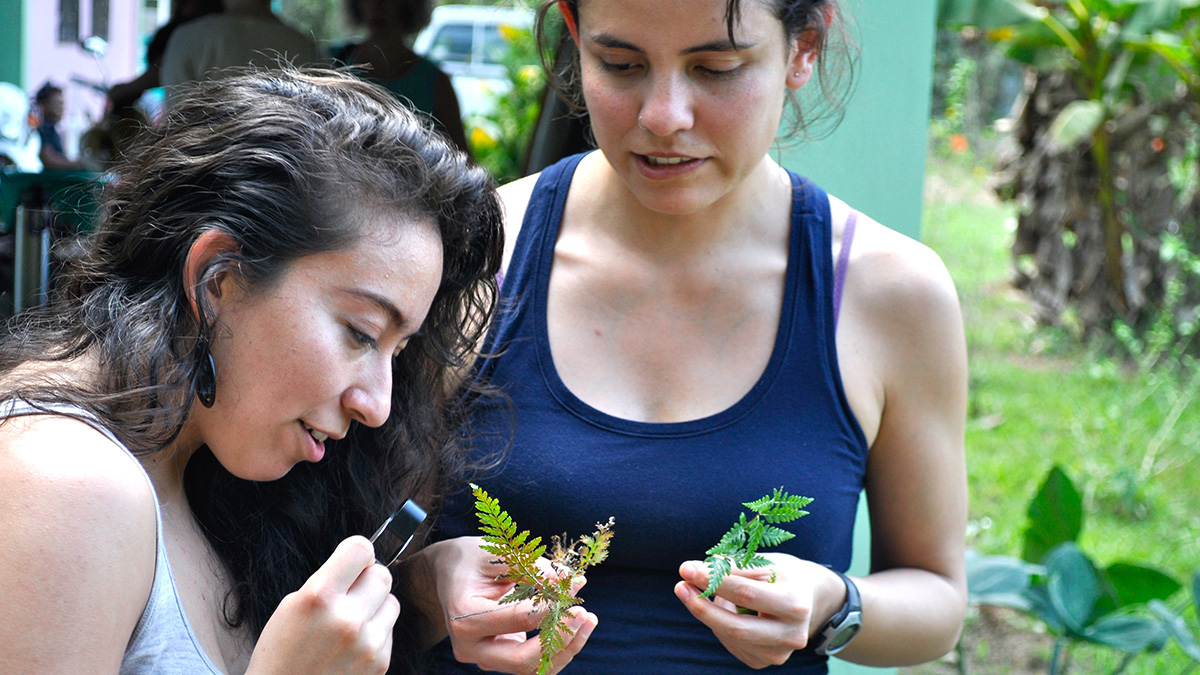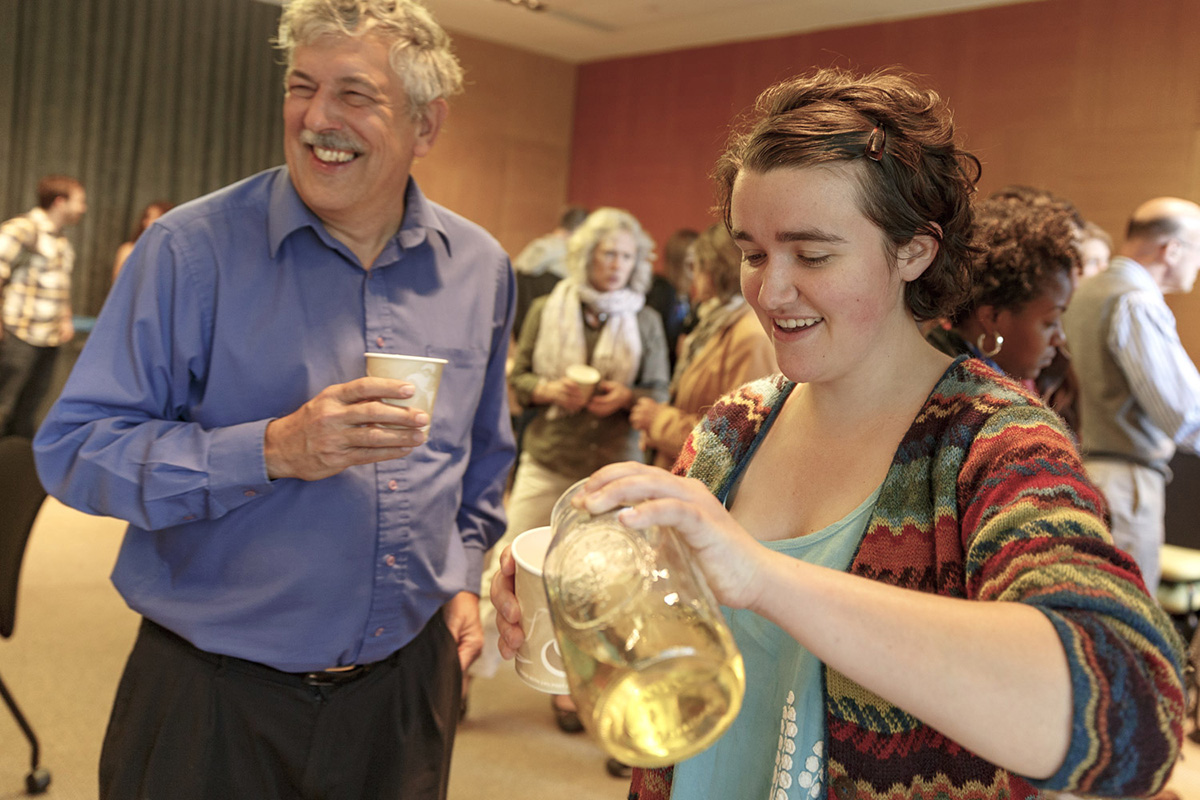Student exploration: Healing starts with everyday plants
By Blaine Friedlander

Stretching beyond the “apple a day” adage, Cornell students explored a natural area in Ithaca and villages in Belize to learn how common plant life helps alleviate ailments.
“In Belize, use of healing plants is a centuries-old tradition that’s being lost because fewer young people are pursuing plant medicine,” said senior lecturer Marcia Eames-Sheavly, who teaches Healing Plants and the People Who Use Them.
Said Eames-Sheavly, “It’s fascinating that here in the U.S., the interest in healing plants seems to be exploding.”
Early in the spring semester, students prepared by learning how to identify plants, read up on ethics and cultural sensitivity, and studied technology. For the 2016 spring break, one group traveled to the Toledo District of Belize to work with Mayan healers, while other students worked with Tammi Sweet, co-founder of the Heartstone Herbal School, at the Cayuga Nature Center in Ithaca.
On May 16 the students presented their final projects. Among them was a medicinal herb recipe book, “Cornell Survival Teas,” penned by Ben Sword ’18. The infusions include recipes for the stimulating Prelim Study Buddy, featuring gingko, peppermint and Tulsi leaves. Or, as Sword suggests, “to sedate the voices in your head, try some calming Insomnia’s Worst Nightmare,” made from skullcap leaf, valerian and chamomile. All of the recipes are “crafted with love, brilliance and a pinch of magic, each tea is designed for good flavor, easy accessibility and maximum health benefits,” he said.
Katie Donnelly Moran ’18 explored tea infusion to improve nerve-system health. “My favorite is nettle, which has lots of nutrients,” she said. “You drink it and you feel like you’re getting a nourishing drink. Another favorite is Saint John’s wort, which makes you feel good. However, it makes a bitter tea, if you let it steep for too long.”
Paige Wagar ’18 presented on workshops and nature hikes she will be leading this summer at home in southern California at the Ventura Botanical Gardens and the Ventura Boys and Girls Club; she has developed a workbook for kids ages 5 to 10. During the school year, Wagar leads overnight backpacking trips in the Finger Lakes region and teaches environmental stewardship, basic wilderness survival skills and field biology through Cornell Outdoor Education. She said: “I want to get kids to think of nature as a place to appreciate.”

Angela Link ’16 and Jessica Barbini ’18 talked intensively with Belizean healers and produced a video. “The most amazing experience I had was talking to the healers. They live in rural areas, so medical care is hard obtain,” said Link. “The healers have a very different way to think about medicine. I really treasure it, as this topic is really valuable and easily forgotten about. It has such a long tradition.”
Walking through the Belize national parks, examining plant varieties, Barbini enjoyed getting to know the healers. After a day, they opened up. “They themselves seemed shy at first and spoke mostly Mopan [Mayan],” Barbini explained. “But as the healers got comfortable in knowing us, they began to speak fluent English.”
Charis Boke, doctoral candidate in the field of anthropology, collaborated in teaching the class, focusing on cultural aspects. Grant Thompson, a graduate student in the field of horticulture and Camila Martinez, a graduate student in the field of plant biology, prepared the students for their spring break experiences.
Media Contact
Get Cornell news delivered right to your inbox.
Subscribe